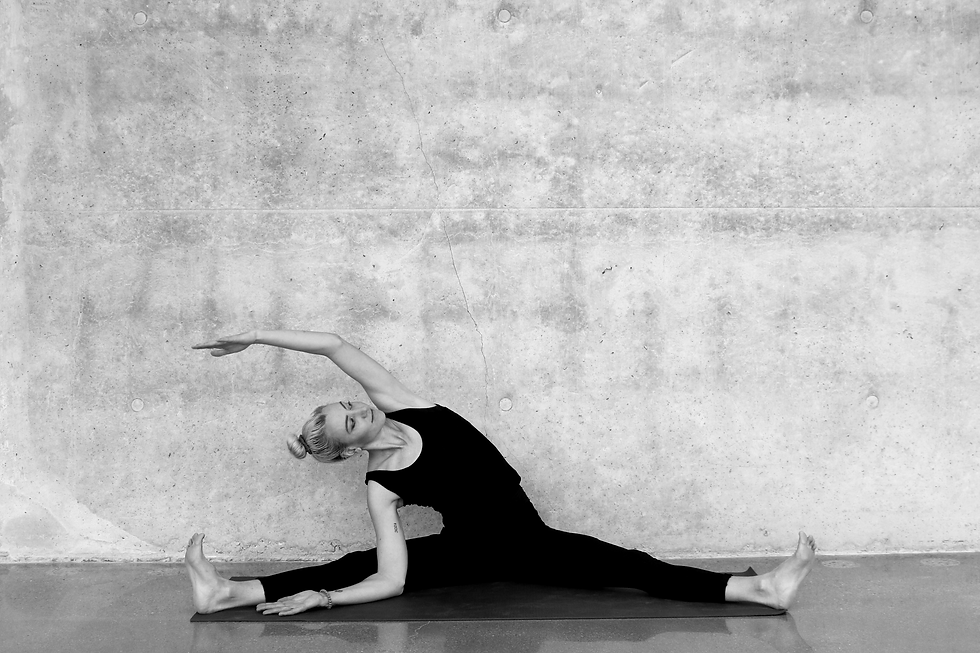5 Tips for Safe Dance Practice
- The Ballet Academy

- Oct 8, 2019
- 3 min read
Updated: May 19, 2020
We as dancers are athlete-artists. Our art form requires us to leap through the air, turn in a pirouette on the tips of our toes, and finish gracefully upon descent back to the floor in an effortless manner. For the student or beginner-level dancer, competition and desire to progress faster to the more difficult steps in ballet can lead to unsafe practice and risk to injury. Professional dancers are expected to work outrageous schedules, rehearsing for hours during the day and performing at nights up to eight shows a week, for an entire season at a time. In addition, today’s ballet choreography forces dancers to push and pull their bodies in extreme ways with no expectations of wear and tear on the body. As a result, the high-level demands placed on dancers can lead to damage to our physical and emotional well-being.
Safe dance practice or dance wellness is imperative to all dancers of any age or ability. Knowing how to dance effectively yet safely is the common goal of all dancers, whether you are just starting your first class or a professional member of a company. It is important for us to train our very best, whilst heeding to procedures that will protect our bodies, reduce injury rate, and promote a healthy attitude toward dance for a long and prosperous dance career.
Here are some tips to help you employ safe dance practice for your dance training.

Always do a proper warm-up before class. Try to arrive 10-15 minutes before class starts to allow yourself time to effectively warm-up before starting plies at the barre. You might think that you can warm-up with plies at the start of class and subsequent exercises, however, it is best to warm-up your muscles in preparation for class. We suggest you do some dynamic or cardio exercises as a way to increase your heart rate to warm up. This way, your body is best prepared to tackle the challenges of ballet class with less risk of injury.
Do an effective cool-down after class. Most dancers are aware of the benefits of warm-up before class, but few regularly practice cool-down after class. At the end of class, your body and muscles at their peak activity upon finishing grande allegro and coda. This is the time to tell your muscles to wind down back to normal. Stretching is perfect for cool down. Your muscles active and pliable for stretching to increase flexibility and range of motion without risk of pulling a muscle.

Stay hydrated. Make sure to drink lots of water! A water bottle is a must-have in your dance bag. Keep your body hydrated during long rehearsals or days at the studio. Drink plenty of water before and after class, as well as small sips throughout class.
Rest, rest, rest! As much as you want to progress faster in your dance training by taking extra classes or do body conditioning exercises outside the studio, you must let your body rest and recover. Resting promotes recovery, reducing the risk of overtraining, stress and fatigue. Take at least one day for you to rest your body and mind. A healthy and happy dancer comes from a balanced workload and rest.
Listen to your body. Lastly, make sure you listen to your body! If something hurts, it could be a sign of injury. A sharp pain in a specific spot is obvious, but a slight discomfort that has slowly been developing for a while, or lingering from a previous injury is also a red flag. Moderate your body’s aches and pains so that injuries aren’t ongoing or reoccurring. If they are, do take precautions and regulations in class or on stage, such as stop doing a step that triggers the pain or wearing a medical brace to nurse your body back to health.
Injuries are not only a physical impairment on the body but can also produce mental anxiety and distress. Remember to keep a positive mindset with dealing with an injury. Take this opportunity away from the studio to rest and recover so that your injury will fully heal, or cross-train other areas of the body. Every dancer progresses at his or her own pace; try not to compare yourself to others and let your injury heal at its own pace.
Read 4 Ballet Conditioning Exercises You Can Do At Home to cross-train while you are injured.

for our new Progressing Ballet Technique (PBT) classes to learn more about safe dance practice with ballet conditioning exercises.




Comments